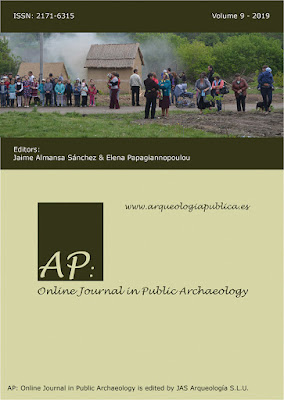Volume 9 - Editorial: Transition

EDITORIAL Transition Jaime ALMANSA SÁNCHEZ, Editor Elena PAPAGIANNOPOULOU, Editor Easter 2020. Being in quarantine in our respective homes due to the COVID-19 pandemic crisis, it was time to move things forward and come out of this confinement with a belated volume 9. As this editorial is being drafted during the COVID-19 outbreak, our hope in the current climate of uncertainty is that you, your loved ones, and your community are safe. During this past year much has changed. As far as the journal is concerned, apart from dealing with the current crisis, this past year has been quite challenging and could be described as a year of transition. Unfortunately, with this volume we say goodbye to two treasured members of the team: Amanda Erickson Harvey and Alexandra Ion. Both have provided their great services to the journal for many years, having served as an Assistant Editor and Reviews Editor respectively, and felt that it was now time to move on. Need...



